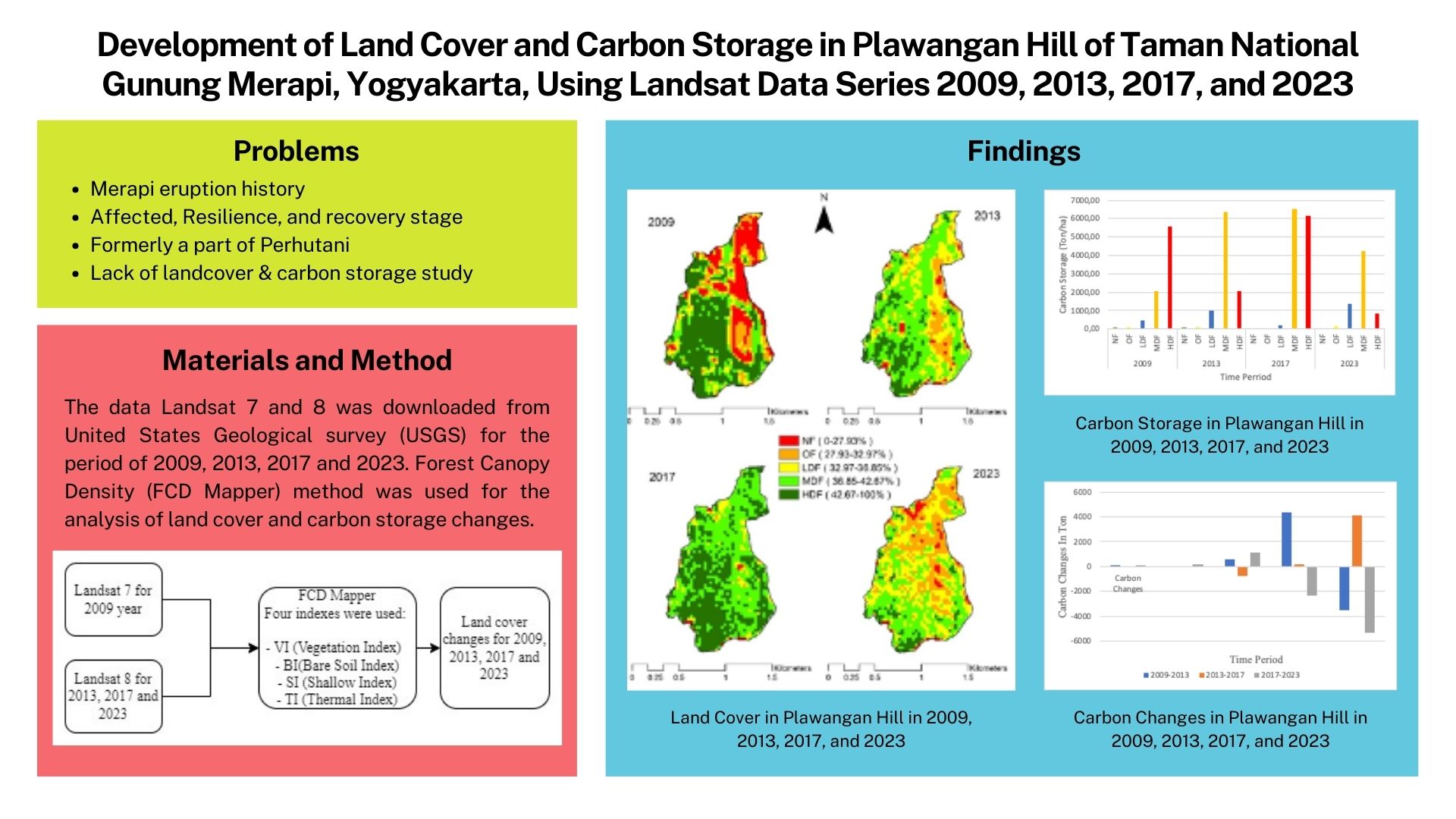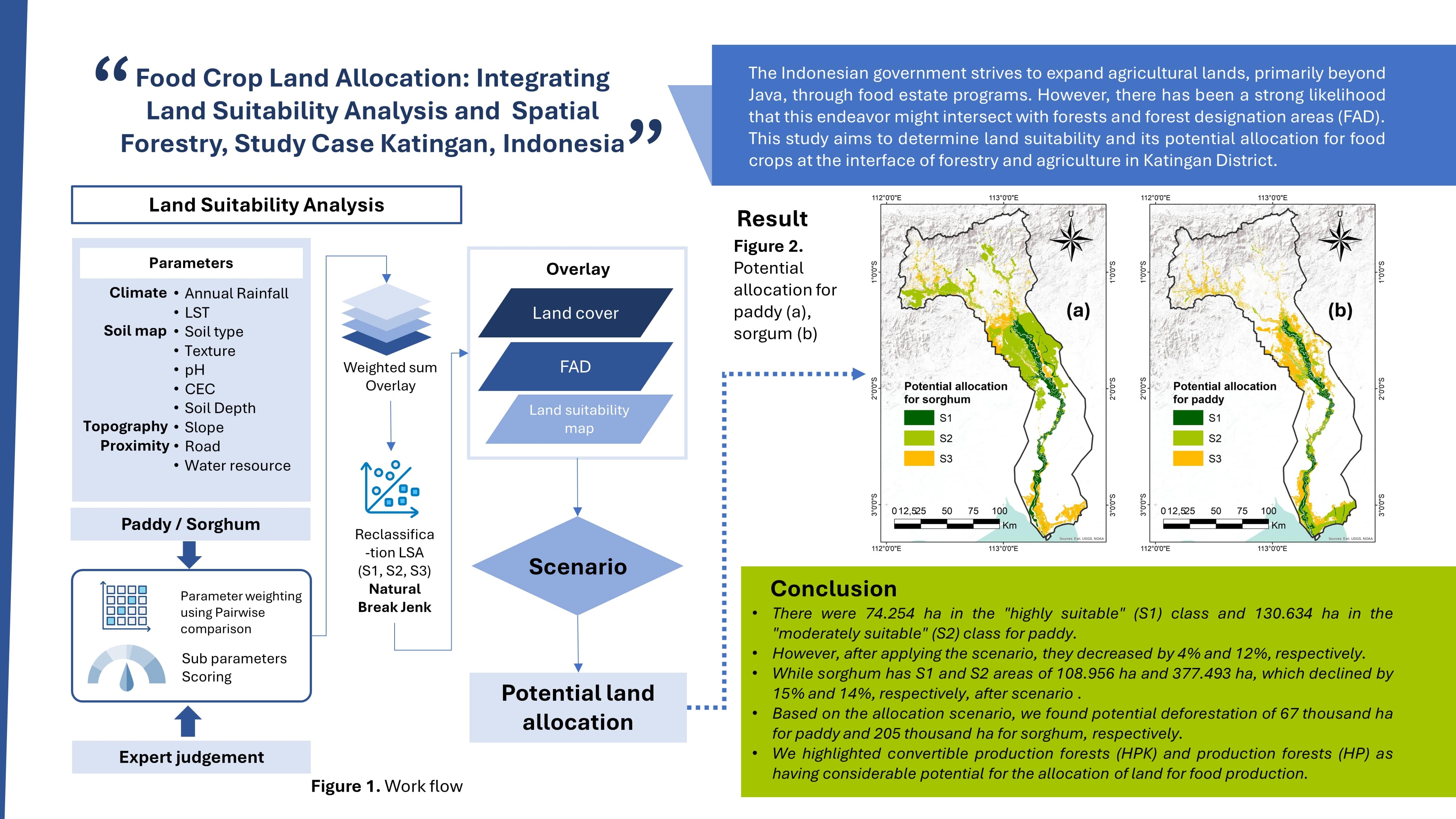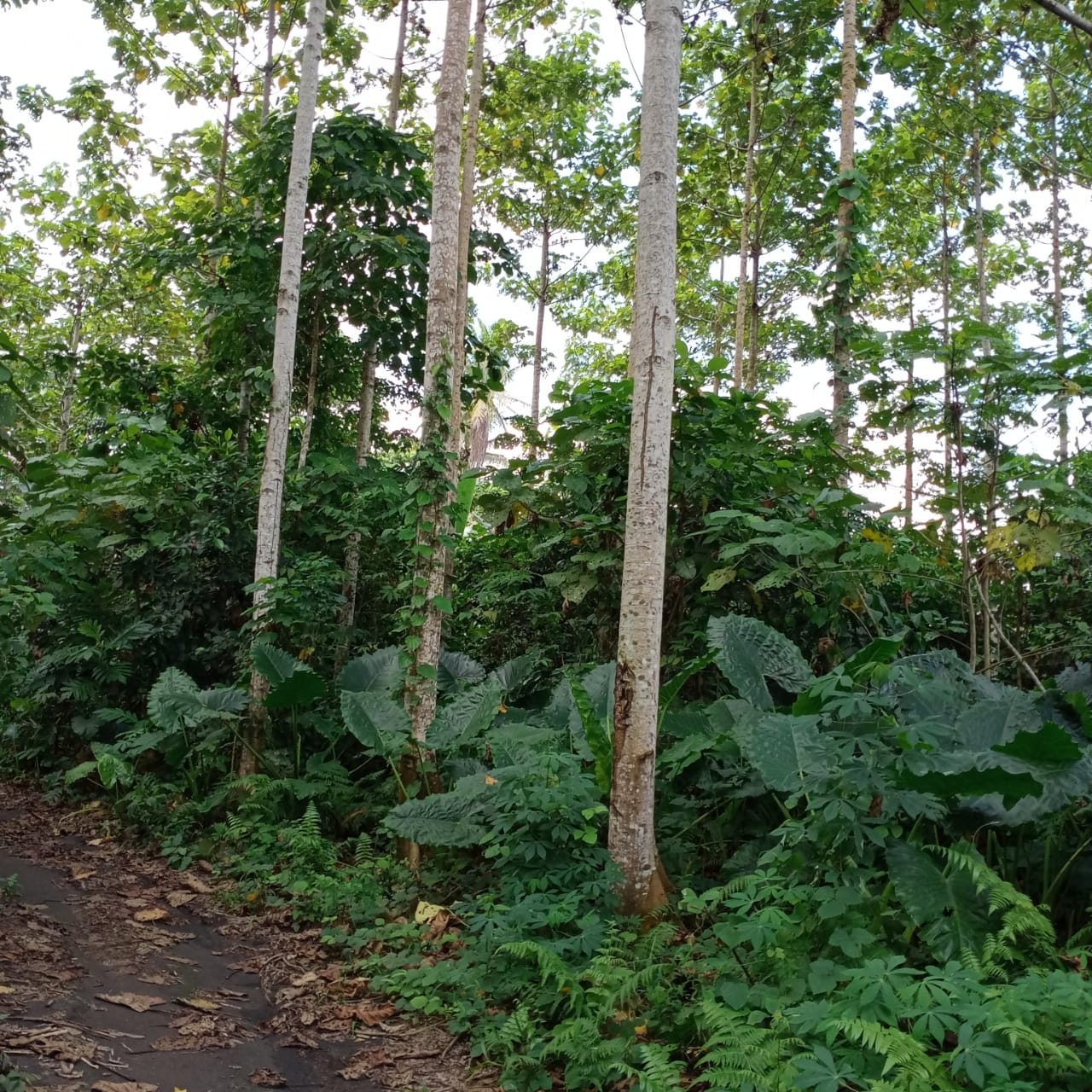Factors Causing Failure of the REDD+ Program Implementation in Central Kalimantan
Abstract
Deforestation becomes a crucial issue in the context of climate change. Deforestation in Southeast Asia is more serious than in Amazonia and Central Africa due to forest clearing done for economic activities such as agriculture and timber production. Among the ASEAN countries, Indonesia contributes to the biggest number. In order to solve this issue, Indonesia cooperates with the Government of Norway to implement the Reducing Emission from Degradation and Deforestation Plus (REDD+) program. The program is implemented in several regions in Indonesia as pilot projects. One of them is in Central Kalimantan. Although many resources are spent to support the success of the program in Central Kalimantan, it seems that the program does not successfully solve the problem for Central Kalimantan Province suffers high degradation and deforestation. Therefore, this study aims to investigate the causes of failure in implementing the REDD+ program in Central Kalimantan by using the bottom-up implementation model. This study applied a qualitative method. The informants in this study were government and non-government agents involved in the REDD+ implementation in Central Kalimantan, such as Lembaga Dayak Panarung, Aliansi Masyarakat Adat Nusantara of Central Kalimantan, and Wahana Lingkungan Hidup Indonesia. Data were collected using interview and observation. Collected data from interview and observation were supported by secondary data. This study found that there are two major problems causing the failure of REDD+ implementation. The first problem is different perceptions between the communities. They thought that the REDD+ program was a project that only benefited to certain groups. Furthermore, the practice of bad forestry governance triggers bad implementation.
References
Barbier, E. B. (1993). Economic aspects of tropical deforestation in Southeast Asia. Global Ecology and Biogeography Letters, 3(4/6), 215–234. https://doi.org/10.1111/conl.12067.
Creswell, J. W. (2015). Qualitative inquiry and research design: Choosing among five approaches (4rd ed.). Thousand Oaks: Sage.
[FAO] Food and Agriculture Organization. (2010). Global forest resources assessment 2010: Terms and definitions. Rome: FAO.
Fischer, R., Hargita, Y., Günter, S. (2016). Insights from ground level? A content analysis review of multi-national REDD+ studies since 2010. Forest Policy Economics, 66, 47–58. https://doi.org/10.1016/j.forpol.2015.11.003
Hjern, & Hull. (1982). Implementation research as empirical constitutionalism. European Journal of Political Research, 10, 105–115. https://doi.org/10.1111/j.1475-6765.1982.tb00011.x
Karsenty, A. & Ongolo S. (2012). Can “fragile states” decide to reduce their deforestation? The inappropriate use of the theory of incentives with respect to the REDD mechanism. Forest Policy and Economics, 18, 38–45.
Lipsky, M. (1978). Standing the study of public policy implementation on its head. In W. D. Burnham, & M. W. Weinburg, American politics and public policy(pp. 391–402). Cambridge: MIT Press.
Lipsky, M. (1980). Street-level bureaucrats. New York: Russell Sage Foundation.
Matland, R. E. (1995). Synthesizing the implementation literature: The ambiguity-conflict model of policy implementation. Journal of Public Administration Research and Theory, 5(2), 145–174.
Mattew, L., & Heather. (2012). Community perceptions of REDD+: A case study from Papua New Guinea. Climate Policy, 12(1), 115–134. https://doi.org/10.1080/ 14693062.2011.579317
Miles, M. B., & Huberman, A. M. (1994). Qualitative data analysis (2nd ed.). USA: Sage Publication.
Palumbo, D. I., Maynard-Moody, S., & Wright, P. (1984). Measuring degrees of successful implementation. Evaluation Review, 8(1), 45–74. https://doi.org/10.1177/ 0193841X8400800103
Pasgard, M. (2015). Lost in translation? How project actors shape REDD+ policy and outcomes in Cambodia. Asia Pacific Viewpoint, 56(1), 111–127. https://doi.org/ 10.1111/apv.12082
Purwanto, & Sulistyastuti. (2012). Implementasi kebijakan publik: Konsep dan aplikasinya di Indonesia. Yogyakarta: Gava Media.
Rykkja, L. H., Neby, S., & Hope, K. L. (2014). Implementation and governance: Current and future research on climate change policies. Public Policy and Administration, 29(2), 106–130. https://doi.org/10.1177/ 0952076713510344
Sabatier, P. (1986). Top-down and bottom-up approaches to implementation research: A critical analysis and suggested synthesis. Journal of Public Policy, 6(1), 21–48. https://doi.org/10.1017/S0143814X00003846.
Smith, S. R. (2003). Street-level bureaucracy and publicy policy. In B. G. Peters, & J. Pierre, Handbook of public administration. London: Sage.
Suwarno, A., Hein, L., & Sumarga, E. (2015). Governance, decentralisation and deforestation: The case of central Kalimantan Province, Indonesia. Quarterly Journal of International Agriculture, 54(1), 77–100.
Warwick, D. P. (1982). Bitter pills: Population policies and their implementation in eight developing countries. Cambridge: Cambridge University Press.
Yin, R. K. (2002). Studi kasus desain & metode. Jakarta: Raja Grafindo Persada.
Authors

This work is licensed under a Creative Commons Attribution 4.0 International License.
Jurnal Manajemen Hutan Tropika is an open access journal which means that all contents is freely available without charge to the user or his/her institution. Users are allowed to read, download, copy, distribute, print, search, or link to the full texts of the articles in this journal without asking prior permission from the publisher or the author. This is in accordance with the Budapest Open Access Initiative (BOAI) definition of open access.






